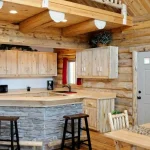Painting kitchen cabinets is one of the most cost-effective ways to update the look of your kitchen without a full remodel. Freshly painted cabinets can instantly brighten your space and make it feel new, all while keeping your budget intact. Whether you’re looking to modernize your kitchen with sleek colors or refresh the space with a classic look, a coat of paint can make a big difference.
In this guide, you will learn the step-by-step process to paint your kitchen cabinets properly. From preparation and choosing the right materials to applying techniques that ensure a smooth finish, we’ll cover everything you need to know. Following these instructions will help you avoid common mistakes and achieve professional-looking results at home.
Let’s dive into the steps to transform your kitchen cabinets!
Preparation is Key

Before you begin painting your kitchen cabinets, proper preparation is crucial for ensuring a smooth, long-lasting finish. Skipping this step can result in uneven coverage, paint chipping, or poor adhesion, which could ultimately ruin the look of your project.
Start by thoroughly cleaning your cabinets to remove any grease, dirt, or residue. This is especially important in the kitchen, where grease tends to accumulate over time. A degreaser or a mild cleaning solution will do the job. Make sure to wipe down every surface, including cabinet doors, drawers, and frames.
Next, carefully remove the cabinet doors, drawers, and hardware such as hinges and knobs. Labeling these items as you go is a smart move, ensuring that you can easily reassemble them after the painting process is complete. Use painter’s tape to label each piece, and store the hardware in labeled bags to keep everything organized.
Sanding the cabinets is the next step. Sanding helps create a slightly rough surface, which allows the primer and paint to stick more effectively. Use a fine-grit sandpaper, like 220-grit, and lightly sand the entire surface. Don’t skip this step, as it’s key to achieving a professional finish. After sanding, be sure to remove any dust with a damp cloth to prevent imperfections in the paint.
Finally, before you start priming, make sure to tape off any areas around the cabinets that you don’t want to paint, such as countertops, walls, and appliances. Cover the floor with drop cloths to protect it from any paint splatters. This attention to detail during the preparation phase will set you up for success later on.
Choosing the Right Paint and Tools
Once your cabinets are prepped and ready, the next important decision is selecting the right paint and tools. Not all paints are suitable for cabinets, so it’s essential to choose wisely for durability and a long-lasting finish.
Start by selecting the type of paint. For kitchen cabinets, the two main options are latex (water-based) and oil-based paints. Latex paints are easier to work with, dry quickly, and clean up with water. They are a good choice for DIY projects and have low levels of VOCs (volatile organic compounds), making them safer for indoor use. Oil-based paints, on the other hand, are more durable and provide a smoother, harder finish, but they take longer to dry and require solvents for cleanup. Both types can work well for kitchen cabinets, but the choice depends on your priorities—whether you prefer ease of use or long-term durability.
The finish of the paint is also an important consideration. For kitchen cabinets, a semi-gloss or satin finish is recommended. These finishes strike a balance between shine and durability, making them easy to clean while still offering a sleek look. A flat or matte finish might look good initially, but it will be harder to clean and more prone to showing wear over time.
Next, consider using a high-quality primer. Priming your cabinets creates a smooth base for the paint to adhere to and helps block stains from bleeding through. Without primer, you risk uneven coverage and a less durable finish. A stain-blocking primer is especially helpful in kitchens, where cabinets may have absorbed oils or food stains over the years.
When it comes to painting tools, you have several options. Angled brushes work well for edges and detailed areas, such as cabinet frames and moldings. For larger, flat surfaces like cabinet doors, a foam roller is ideal for achieving a smooth, even coat without visible brush marks. Some DIYers prefer using a paint sprayer for a flawless, professional-grade finish, but this tool requires more experience and preparation. Whether you use brushes, rollers, or a sprayer, the key is to apply the paint in thin, even coats for the best results.
Choosing the right paint and tools is essential for ensuring that your kitchen cabinets not only look great but also stand up to daily wear and tear.
Applying Primer
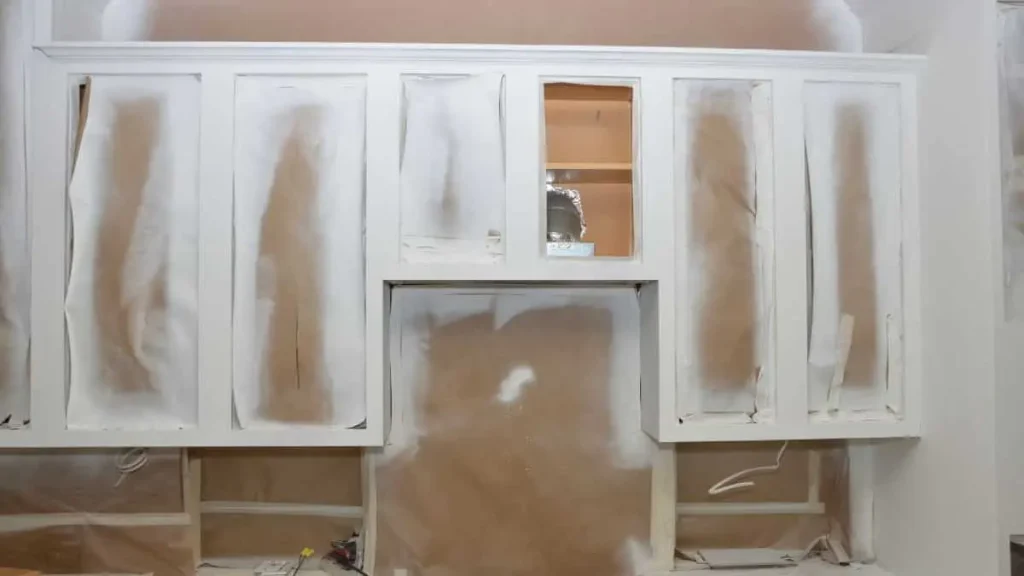
Once your cabinets are properly prepared, the next critical step is applying a high-quality primer. Primer plays a vital role in ensuring that your paint adheres well to the cabinet surface and lasts over time. Without primer, the paint may peel, chip, or fail to cover imperfections adequately.
Before you begin priming, make sure all surfaces are dust-free. Any remaining dust or debris could create bumps or uneven textures when painting. To start, use a good brush for edges and detailed areas like grooves or decorative moldings. For larger, flat surfaces like cabinet doors and drawer fronts, a foam roller works best to achieve a smooth, streak-free finish.
Apply the primer in thin, even coats, covering the entire surface uniformly. Thick coats of primer may lead to dripping or uneven coverage. After the first coat, check for any spots that may have been missed or areas where the wood grain is still visible. Let the primer dry fully according to the manufacturer’s instructions before proceeding to the next coat or sanding.
After the primer has dried, lightly sand the surface again with a fine-grit sandpaper to ensure that it is smooth. This step helps eliminate any imperfections and prepares the surface for the paint. Wipe down the cabinets with a damp cloth to remove any dust before moving on to painting. Skipping this step may result in a rough texture or improper paint adhesion.
Painting Techniques
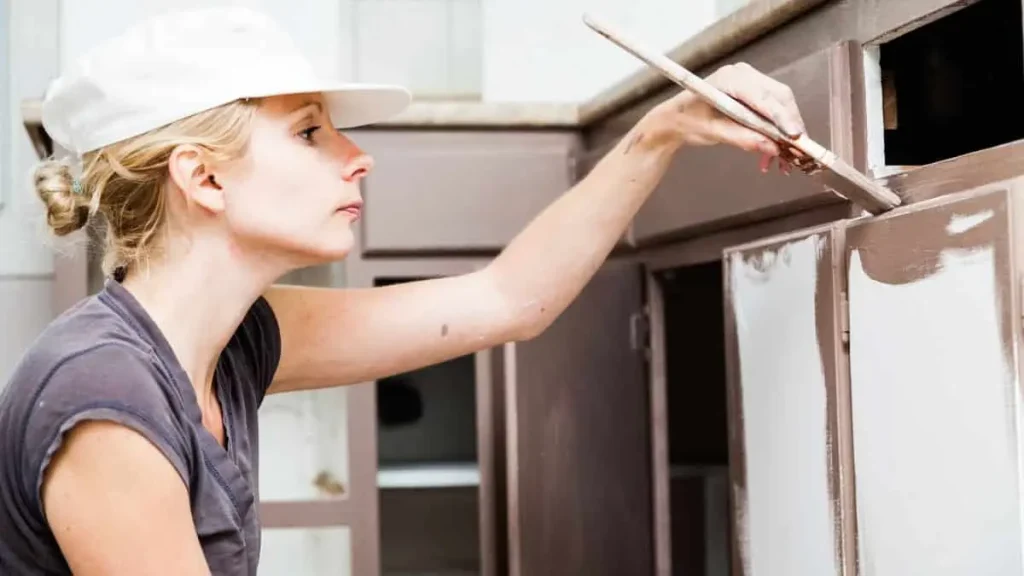
Now that the cabinets are primed and ready, it’s time to apply the paint. Proper painting techniques are crucial to achieving a professional look, so attention to detail is essential throughout the process.
Start with the first coat of paint, applying it in thin, even layers. Begin with the cabinet frames and harder-to-reach areas using an angled brush. For the larger, flat surfaces of the cabinet doors and drawers, use a foam roller. Thin coats of paint dry more evenly and reduce the likelihood of drips or brush marks. Avoid overloading the brush or roller, as too much paint can lead to a sloppy finish.
When painting, always follow the grain of the wood for a more natural, even appearance. Long, smooth strokes help ensure that the paint covers consistently without streaks. If you’re using a paint sprayer, keep the sprayer moving constantly in straight, even passes to avoid uneven coverage or buildup in one spot. The key is to apply light coats of paint and build up the coverage gradually.
After the first coat dries, it’s important to sand lightly once again. Use fine-grit sandpaper to remove any rough patches or bumps that may have formed during the drying process. This ensures that the next coat goes on smoothly and without imperfections. Wipe the surface clean before applying the second coat of paint.
The second coat of paint is where you’ll achieve the final, smooth finish. Apply it in the same manner as the first—thin, even coats with careful attention to the grain and using the appropriate tools for different surfaces. Depending on the color and type of paint you’ve chosen, a third coat may be necessary for full coverage, especially if you are transitioning from a dark to a light color.
Patience is key at this stage. Allow each coat to dry completely before applying the next one. Rushing through the drying process can lead to smudging, uneven coverage, or peeling later on.
Reassembling and Finishing Touches
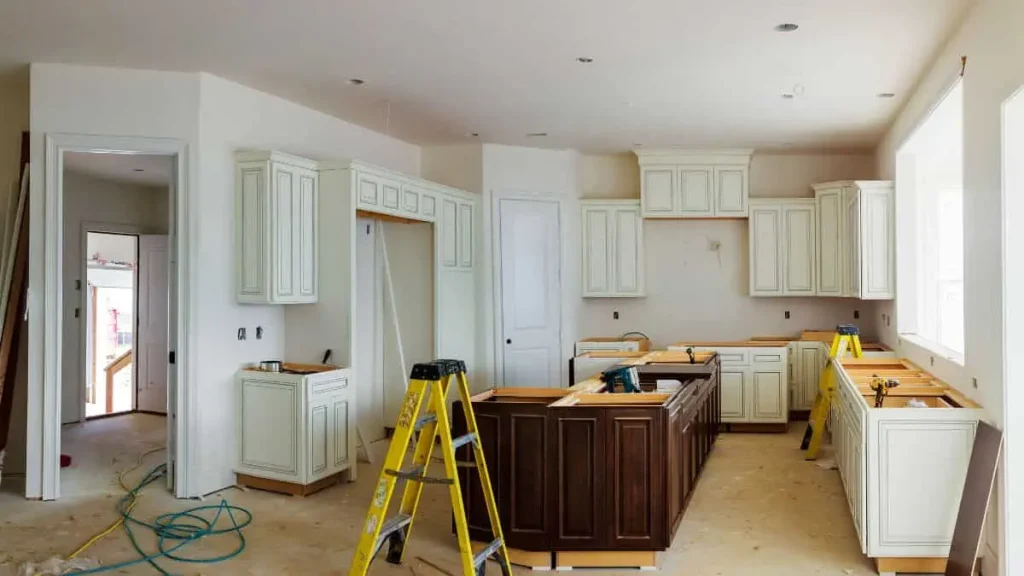
Once the final coat of paint has dried completely, the last phase involves reassembling the cabinets and adding the finishing touches. This step is just as important as the painting process because it brings everything together for a polished, professional look.
Start by carefully reinstalling the cabinet doors and drawers. Since you labeled them during disassembly, you’ll know exactly where each piece belongs, which will save you time and prevent frustration. Use a screwdriver to reattach the hinges, making sure they are properly aligned to allow the doors to close evenly. Be gentle when handling the freshly painted surfaces to avoid smudging or damaging the finish.
Next, reinstall the cabinet hardware such as handles, knobs, and pulls. This is a great opportunity to upgrade your hardware if desired. New hardware can complement your freshly painted cabinets and enhance the overall style of your kitchen. Whether you choose modern, sleek pulls or classic, decorative knobs, make sure they are securely attached to avoid wear over time.
The final touch is inspecting your work and making any necessary touch-ups. Sometimes, small areas may have been missed or certain spots may need additional paint. Use a small brush to fix any minor imperfections. Ensuring these details are handled will give your kitchen a complete and refined look. Additionally, if you notice any paint drips or uneven areas, now is the time to sand lightly and apply a final touch-up coat.
Give the cabinets at least 24-48 hours to fully cure before putting heavy items back inside or closing the doors too often. This curing period helps the paint harden, preventing potential scratches or damage.
Common Mistakes to Avoid
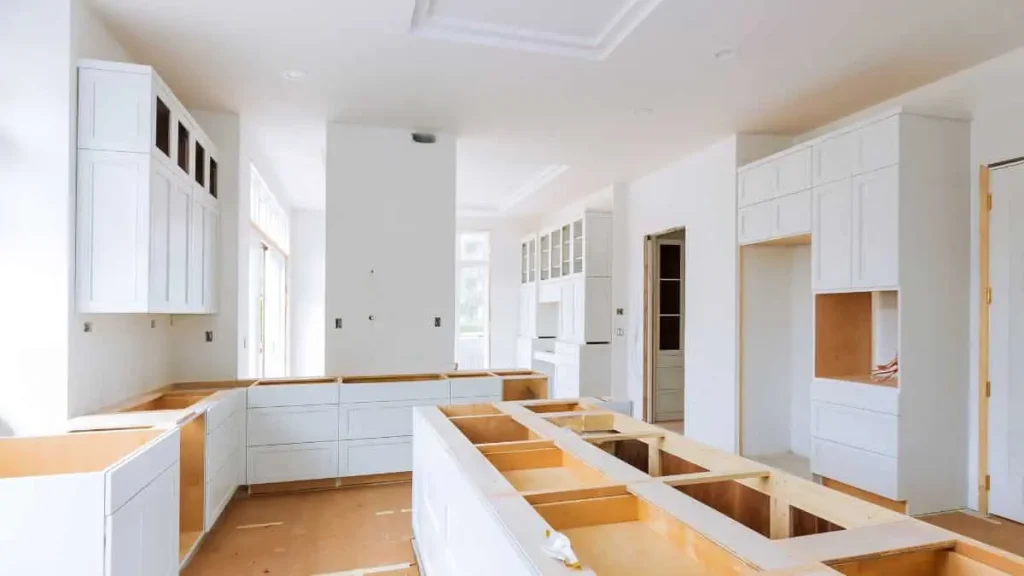
While painting kitchen cabinets can transform the look of your kitchen, there are common mistakes that can jeopardize the final outcome. Knowing what to avoid will help you achieve professional-quality results.
One of the most frequent errors is skipping the sanding process. Skipping sanding or not sanding enough can lead to poor paint adhesion, resulting in peeling or chipping over time. Lightly sanding between coats and before priming is essential to achieving a smooth finish.
Another common mistake is using the wrong type of paint. Not all paints are suited for high-traffic areas like kitchens. Using wall paint instead of cabinet-grade paint can result in a finish that doesn’t stand up to daily wear. Choosing a durable, high-quality paint with the correct finish for cabinets, such as semi-gloss or satin, ensures longevity and easy cleaning.
Applying thick coats of paint is another pitfall. Thick coats may seem like a faster way to complete the job, but they often lead to drips, uneven coverage, and longer drying times. Thin, even layers allow for better control and a more polished appearance.
Rushing the drying time is also a frequent mistake. Failing to allow proper drying time between coats can cause smudging, uneven textures, and poor adhesion. Patience is key. Each layer should be fully dry before moving on to the next.
Lastly, not using primer is a major oversight. Primer not only helps the paint adhere better but also blocks stains and prevents wood grain from showing through. Without primer, the paint job is more likely to fade or peel over time, leading to more frequent touch-ups.
Read Also: 10×10 Kitchen Cabinets Cost
Tips for Choosing Colors and Finishes
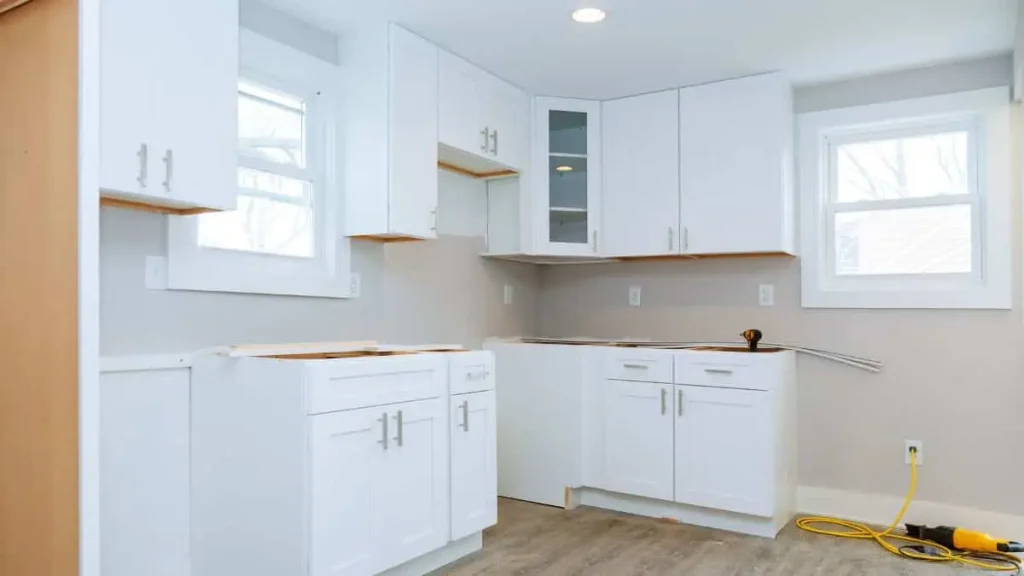
Choosing the right color and finish for your kitchen cabinets is a key decision that will impact the overall look and feel of your kitchen. The color you select should complement the other design elements in your kitchen, such as countertops, backsplash, and flooring, while also reflecting your personal style.
When selecting a color, consider the size and lighting of your kitchen. In smaller kitchens or those with limited natural light, lighter colors like whites, soft grays, or pastels can help brighten the space and create an illusion of openness. Light colors reflect more light, making the room feel larger and more inviting. On the other hand, larger kitchens with ample natural light can handle darker, more dramatic shades like deep navy, charcoal, or even black. These bold colors can add a modern and sophisticated touch, especially when paired with metallic hardware or sleek countertops.
It’s also important to think about long-term appeal when choosing cabinet colors. While trendy colors can be tempting, opting for timeless shades like classic white, warm beige, or natural wood tones may give your kitchen a more enduring aesthetic. These neutral colors tend to have broader appeal and are easier to update with different decor or accent colors over time.
In terms of finishes, the choice between matte, satin, semi-gloss, or high-gloss can affect both the look and functionality of your cabinets. Semi-gloss and satin finishes are popular for kitchen cabinets because they strike a balance between aesthetics and durability. Semi-gloss offers a subtle sheen that enhances the color and is easy to clean, making it ideal for high-use areas like kitchens. Satin finishes, with their softer luster, provide a smooth, elegant look that works well in both modern and traditional kitchens.
High-gloss finishes are another option for those seeking a contemporary, sleek look. They are highly reflective and can make darker colors stand out, though they do require more maintenance to keep fingerprint smudges and scratches at bay.
Ultimately, the right combination of color and finish will depend on your kitchen’s style, your lifestyle needs, and how much maintenance you’re willing to commit to. Consulting with paint professionals or testing samples in your space can also help you make an informed decision.
Maintenance Tips for Painted Cabinets
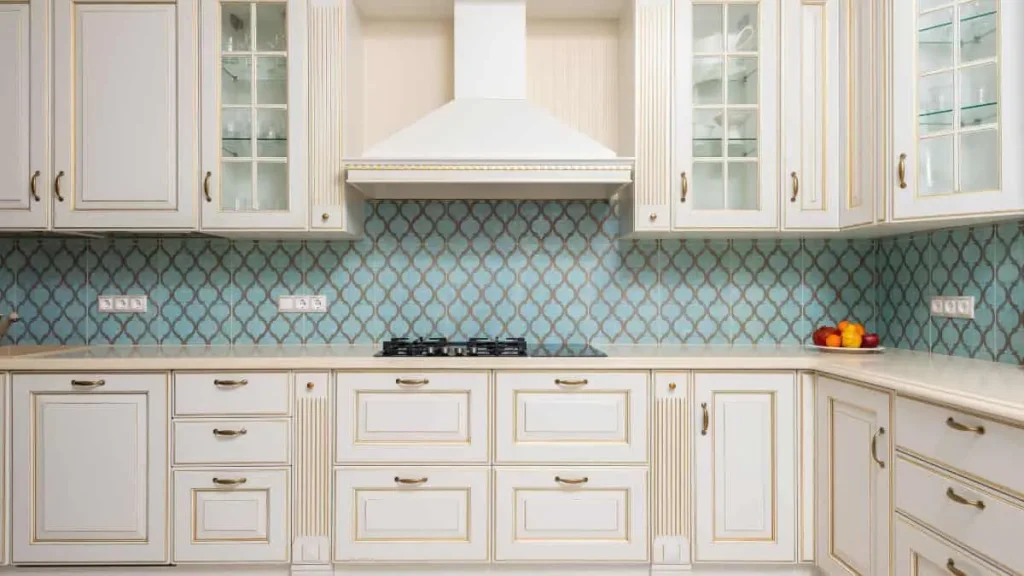
Maintaining your newly painted kitchen cabinets is essential to ensure that they remain beautiful and functional for years to come. While painted cabinets can add a fresh and updated look to your kitchen, they also require regular care to prevent wear and damage.
One of the most important aspects of maintenance is cleaning regularly but gently. Painted surfaces can be sensitive to harsh chemicals and abrasive sponges, which may strip the paint or cause scratches. Use a mild detergent mixed with water and a soft cloth to clean your cabinets, especially in high-touch areas like around the handles and edges. Wipe down any spills or splatters promptly to prevent stains from setting into the paint. For more stubborn stains, avoid scrubbing too vigorously; instead, let the cleaning solution sit for a few minutes before gently wiping.
In addition to cleaning, it’s vital to prevent moisture buildup in and around your cabinets. Kitchens are naturally humid environments, and excess moisture can cause the paint to bubble or peel over time. Wipe down any water spots immediately and ensure that your kitchen is well-ventilated, especially when cooking. Installing or using an exhaust fan can help reduce humidity levels and protect your cabinets from moisture damage.
Protecting your cabinets from heat is another critical factor in preserving their finish. Avoid placing hot pots, pans, or other heat-generating appliances near your painted cabinets, as prolonged exposure to heat can cause the paint to fade or crack. Using heat-resistant mats or ensuring there’s a buffer between the heat source and your cabinets will help maintain their condition.
Periodically check for chips, scratches, or peeling, especially in high-use areas like cabinet doors and drawers. Minor chips or scratches can be touched up with the original paint color to prevent further damage. If you notice larger areas of wear, it may be time to sand down and repaint those sections to restore their appearance.
Lastly, applying a protective topcoat every few years can significantly extend the life of your painted cabinets. Topcoats add an extra layer of protection against scratches, moisture, and general wear and tear. Depending on the finish you used, you can opt for a clear, matte, or satin topcoat to preserve the look of your cabinets while enhancing their durability.
With the right care and attention, painted kitchen cabinets can remain a vibrant, stylish feature in your kitchen for many years, making regular maintenance an important part of their upkeep.
Conclusion
Painting kitchen cabinets is a rewarding home improvement project that can dramatically enhance the appearance of your kitchen. By following the steps outlined in this guide—from proper preparation and selecting the right materials to applying paint and maintaining your newly finished cabinets—you can achieve a professional-looking result that reflects your personal style.
The key to a successful cabinet painting project lies in the details. Careful planning, meticulous execution, and regular maintenance will not only ensure that your cabinets look beautiful but also prolong their lifespan. Whether you choose a light, airy color for a fresh, open feel or a bold hue for a modern statement, your painted cabinets can serve as a stunning focal point in your kitchen.
As you embark on this transformative journey, remember that patience is essential. Allow adequate drying time between each step, and do not rush through the process. The result will be well worth the effort, providing you with a kitchen that feels new and inviting.


